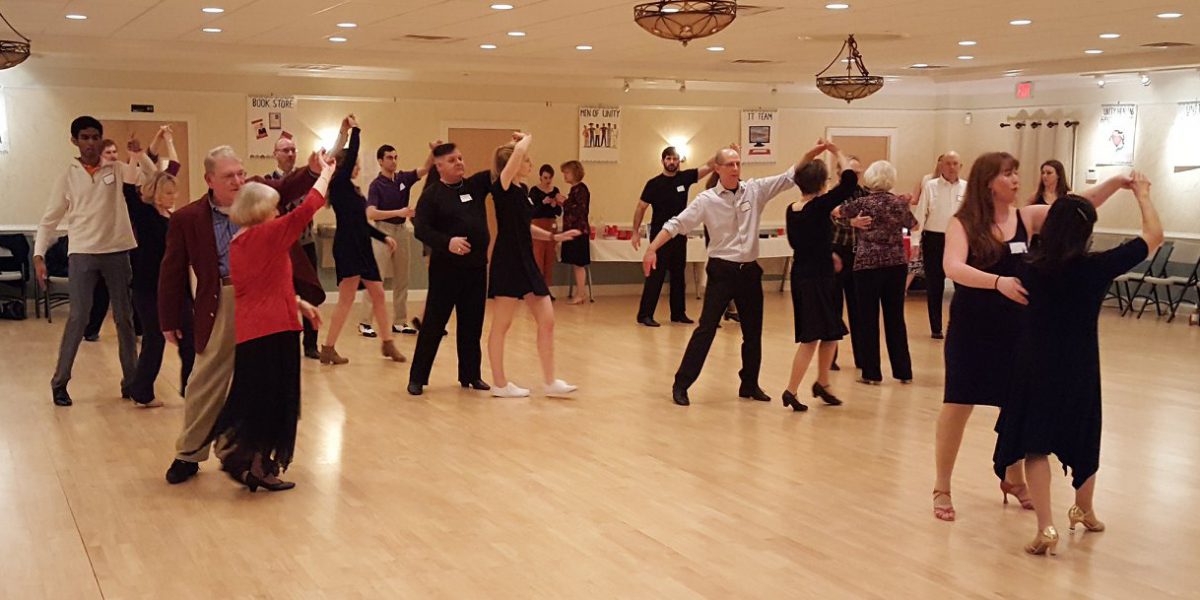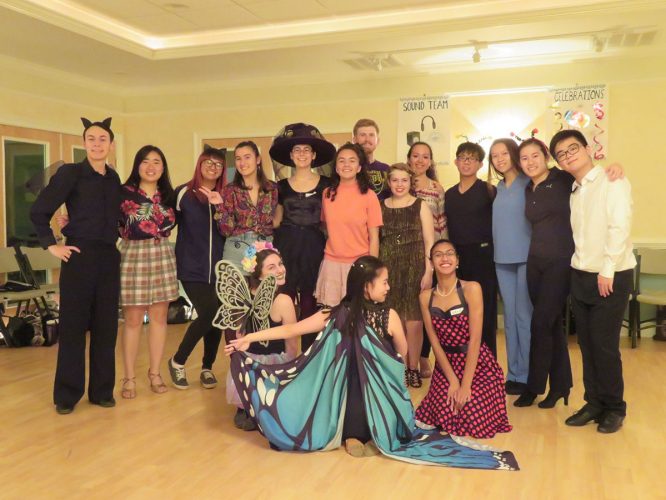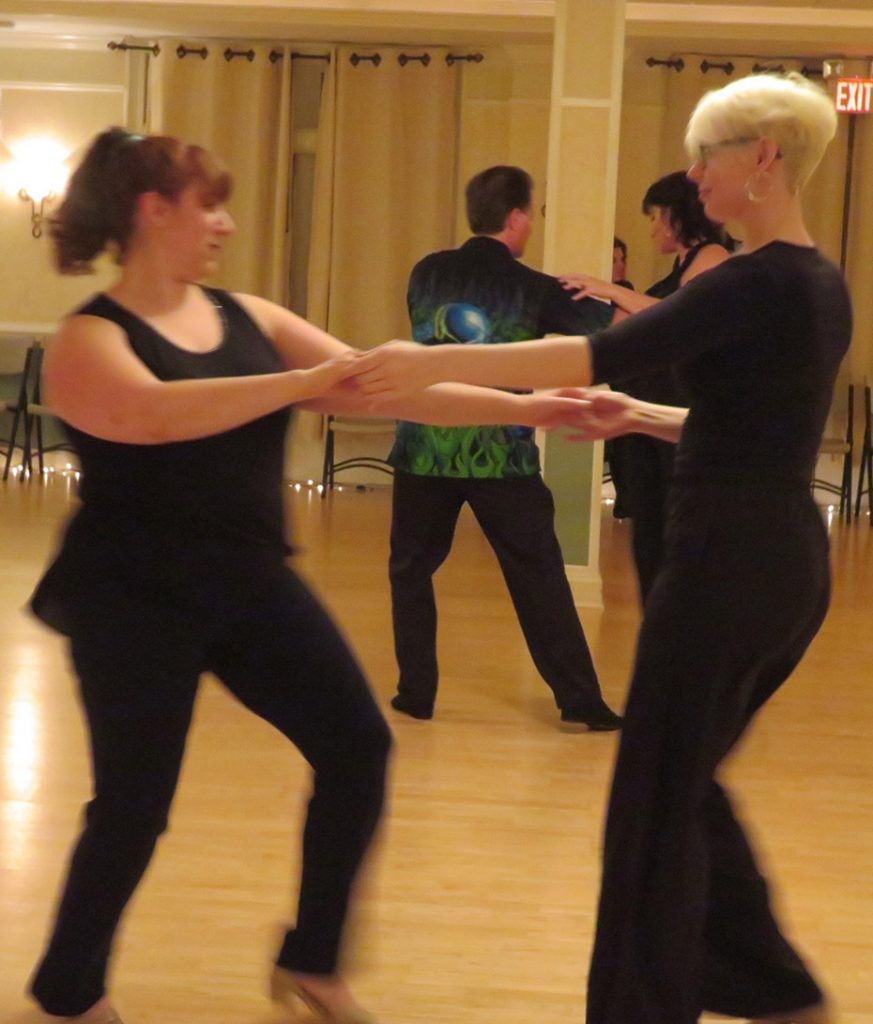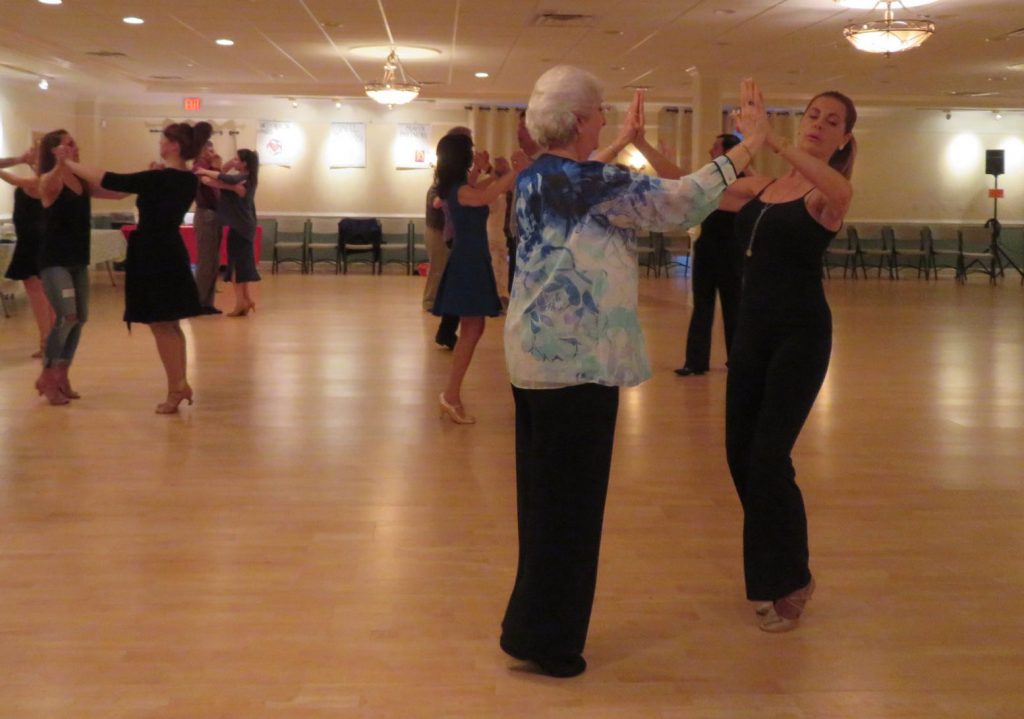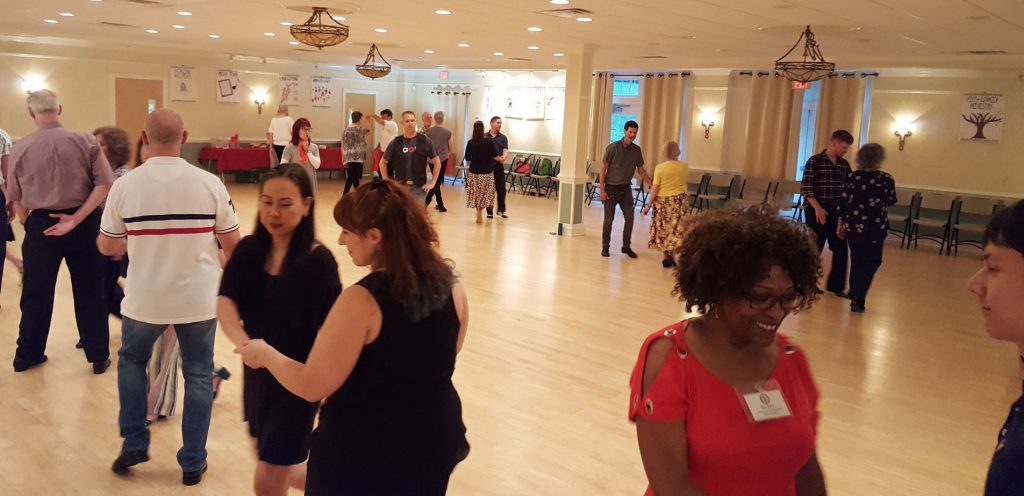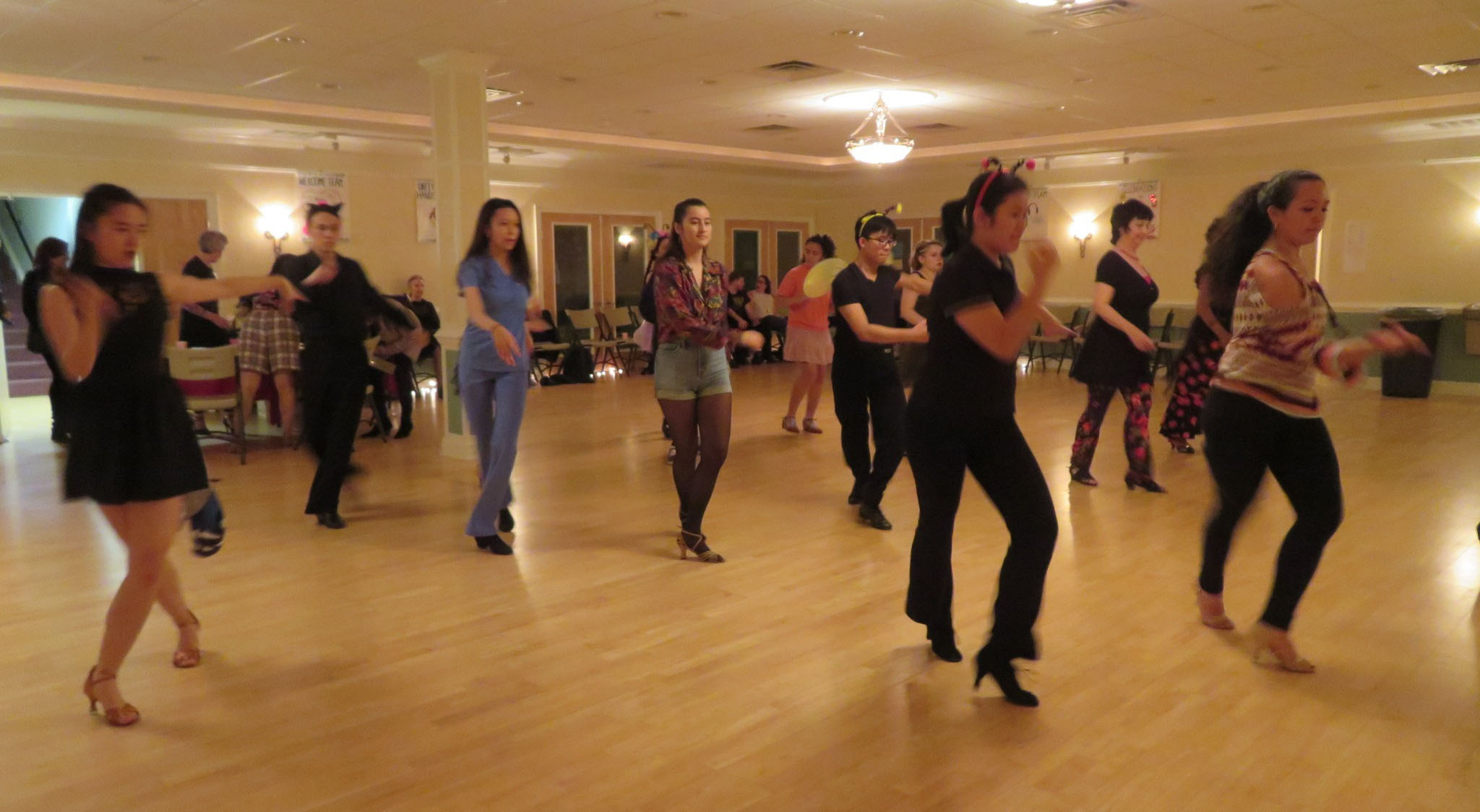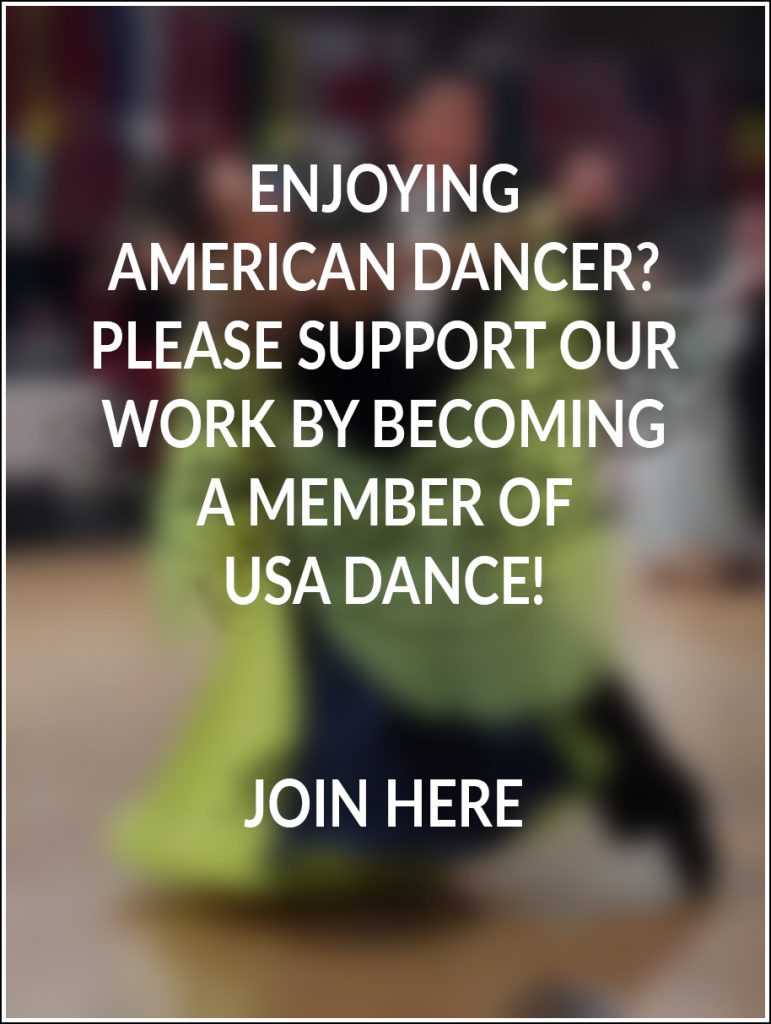Amateur dancers who lead are generally in short supply, which creates a problem for the dance community. This is not true everywhere, of course. Silicon Valley, for example, seems to have more male than female ballroom dancers due to the often male-dominated high-tech professions nearby. And the USA Dance Chapter in the Boston area, as well as those in a few other communities, reports that its male/female balance is even. But in many communities, women follower dancers may wait so long between dancing opportunities that they may stop attending dances. Those looking for a practice partner or wanting to compete in amateur-couple categories can find it quite challenging to find a lead partner.
I have been dancing for nearly 12 years socially and competitively and thought I would investigate various aspects of increasing the number of leads dancing at our USA Dance Chapter events. For many, this is an issue of getting more men to the ballroom. Until recently, that had been my focus. I hope to improve the experience for everyone.
University of Virginia Dance Club Contingent at a USA Dance; 4 men, 12 women
Photo by Noriko Donahue, courtesy of USA Dance, Charlottesville Chapter #6044
As my first foray into this topic, I surveyed USA Dance members, both men and women, focusing on the choices made by male amateur dancers. How did they get into dancing? How often do they dance? Do they only dance with one partner, such as their wives or girlfriends, or do they dance with many partners? Do they take lessons (group, private, or both)? Do they compete? Do they only dance with partners whose skills are at a certain level? What do they do when there is a large gap between their proficiency and their partner’s proficiency? Does the perception of such a gap keep them off the floor?
Now I am starting to inquire in some new directions: Do women like the option of being the lead in a ballroom couple? How do women followers like dancing with a proficient female lead?
Examples of women leading dance drills during group lessons
Photos by Noriko Donahue, courtesy of USA Dance, Charlottesville Chapter #604444
In the United States, historically it seems that more women than men are drawn to dancing. As late as the 1980s, young girls were likely to focus on ballet, tumbling, gymnastics, and modern dance, while boys were mastering the more traditional sports that gave them higher status among their friends. Back then, a boy’s interest in dancing with girls might have even been viewed with suspicion by his male friends.
Today, in many communities, these gender-based trends may not be as strong as they once were, with school programs such as “Dancing Classrooms” being introduced in some elementary and middle schools. Most of the respondents to the survey considered these school programs very promising. If boys learn dancing at a young age (before they are teens or early in their teens) the belief is that they might become dancers for life. In addition to learning social skills, such training develops good balance, focus, and discipline.
I wondered how most men come to the dance floor. The answer: Many are recruited by their wives or girlfriends. Perhaps a more effective strategy could lie with the already-experienced male dancer, who might ask his friends to try it out. Parents who regularly watch their young dancers get plenty of exposure to dancing; it would seem they would be good prospects to become new dancers. College students or recent graduates can be attracted to the competitive aspect of DanceSport. In fact, USA Dance is trying to establish a competition forum to attract these dancers (men and women) to our dance community. Getting more men dancing is challenging. We can all be recruiters in our non-dance social circles to introduce more men, and women, to try a month or two of studio group classes to find those who “click” with the joy of dancing.
As challenging as it can be to get men into dance studios, we have heard many stories about losing them after a short trial period. How do you get men to move from dipping their toes into the water to finding joy in dancing, so they become long-time dancers? When I asked that question, I heard two main strategies. One seems easy: feed them! I have heard from multiple USA Dance chapters that warm appetizers, preferably home-cooked ones, make a real difference in men returning to social dances. The USA Dance policy is to not allow alcohol, but food apparently makes a difference.
L: Homemade snacks may encourage repeat customers. R: Group shot shows the men/women balance; one woman leads
Photos by Noriko Donahue, courtesy of USA Dance, Charlottesville Chapter #6044
Even more important, was the second strategy: to offer men verbal encouragement for their efforts to learn. The way followers treat beginner partners has a huge impact on the experience. Smiles, patience, and a lot of kind words (including comments like “You’re doing great,” “good start,” and “this is challenging, but you’ll get it”) are all helpful, whereas “help” — back leading, suggesting corrections, and pointing out mistakes — is not. One of a beginner’s biggest fears is of being embarrassed, especially in front of a more experienced partner.
I have found that perhaps a more productive approach, at least in terms of numbers, is to encourage women to learn how to lead. You see female instructors in most studios who have learned the art of leading as part of their training to become instructors. Similarly, you see male teachers who know how to dance as followers. Many would say that a dancer, who can dance both lead and follow, better understands the challenges of their dancing partners. In any case, many women are demonstrating that they can lead quite well, and this immediately balances the numbers so more couples can dance more dances. Dancers in college programs tend to be more flexible about traditional lead/follow roles. Students may switch roles in different dances or styles. Embracing non-traditional couples within the organization can make USA Dance feel more welcoming to this demographic.
If more women learn to lead and take that role at a social dance, how will it be received? As with most new trends, some will jump in quickly while others are less accepting. Saying “No” can be uncomfortable (some will never say “No”), and it can also be hard to hear. I can imagine with time this trend will become more popular.
Dancers may find some additional strategies for improving the balance of leaders and followers and might consider discussing these issues within your own dance community. For example, as the world becomes more gender fluid, instructors can encourage role switching (lead and follow) in group lessons. Occasional line dances during a social event can help unpartnered dancers master the coordination required to dance without the pressure of leading or following. This also encourages group participation and builds confidence.
Line or formation dancing is a good option for social dances when many more women are in attendance.
Photo courtesy of USA Dance, Charlottesville Chapter #6044
During my research, I also asked the seasoned male dancers about their “role” at a social dance. I found most are happy to dance with several women during an evening, regardless of dancing ability and age. I also found that apart from a few reserved dances with their regular partners, most men do not dance with only one person or a small number of dancers. There are some couples who do not switch partners at all, and there are professional instructors who only dance with their students. All these cases deserve to be respected and typically do not hinder the socializing of the rest of the dancers at the party.
All this said, I applaud the male dancers who have persisted. Both male and female dancers can be responsive to the beauty of dancing and the intense pleasure that can be derived from it whether leading or following. In fact, I am told at the highest level of dance, the role of lead and follow passes back and forth within a partnership many times.
Here are some topics to cover in future articles about dancing: How do dancers learn to lead and followers learn to follow? How do dancers negotiate personal space with their partner? How do dancers learn and practice “floor craft” (the art of dancing on a crowded floor with other couples), as well as the differences between social and competitive dancing? As we continue to cover topics on the social dance beat, we welcome contributions from any readers, including anecdotes that shed light on any of these topics. Please send them to marketingcommunications-chair@usadance.org for assignment to the appropriate forum.

